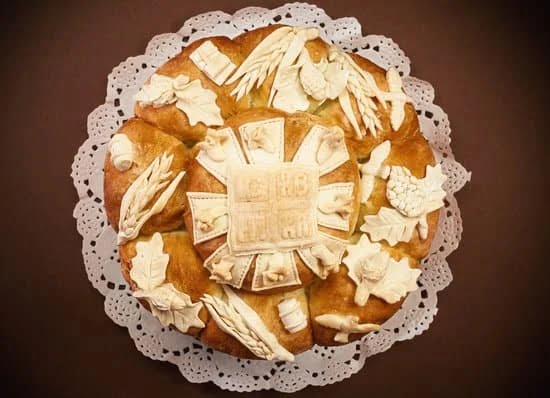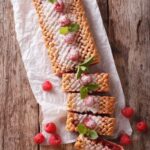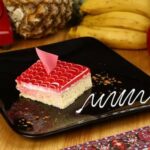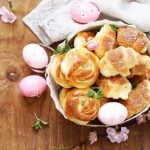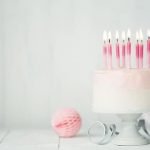Are you looking to learn how to cake decorate at home? Whether you’re a beginner or looking to advance your skills, this article will guide you through the art of cake decorating in the comfort of your own kitchen. From essential tools and equipment to advanced techniques, we’ll cover everything you need to know to bring your cake decorating vision to life.
Cake decorating is not only a delightful hobby but also a creative outlet that allows you to personalize and customize cakes for any occasion. With the right guidance and practice, you can achieve professional-looking results from the convenience of your home. This introduction will provide an overview of the various aspects of cake decorating, including choosing the right cake base and frosting, mastering basic techniques, exploring creative ideas, and overcoming common mistakes.
As we delve into the world of cake decorating, we will share tips on selecting essential tools and equipment for your home bakery. We’ll also discuss the importance of choosing the right cake base and frosting to lay a solid foundation for your creations. Additionally, we will explore basic cake decorating techniques such as piping, spreading, and smoothing, offering step-by-step instructions on how to achieve professional-looking results without years of experience.
Keep reading as we uncover creative ideas for beginners and introduce advanced techniques such as fondant, gum paste, and sculpting for those looking to take their skills to the next level. Let’s get started on your journey to becoming a skilled cake decorator.
Essential Tools and Equipment for Cake Decorating
When it comes to mastering how to cake decorate at home, having the right tools and equipment is essential. Whether you are a beginner or an experienced baker, having the right supplies can make all the difference in achieving professional-looking results.
Basic Tools
Some basic tools that you will need for cake decorating include a turntable, offset spatula, piping bags, piping tips, and a bench scraper. A turntable allows for easy access to all sides of the cake while decorating, and an offset spatula is perfect for spreading frosting and smoothing surfaces. Piping bags and tips are essential for creating intricate designs and decorations on your cakes.
Specialized Equipment
In addition to basic tools, there are also specialized equipment that can take your cake decorating to the next level. This may include a cake leveler for creating even layers, a cake decorating comb for textured finishes, and a cake decorating airbrush for adding color gradients and patterns.
Quality Ingredients
Aside from tools and equipment, using high-quality ingredients is also important when learning how to cake decorate at home. Fresh butter, pure vanilla extract, premium cocoa powder, and high-quality food coloring can all make a difference in the taste and appearance of your finished product.
By investing in the right tools, equipment, and ingredients, you can set yourself up for success when it comes to mastering the art of cake decorating at home.
Choosing the Right Cake Base and Frosting
When it comes to cake decorating at home, choosing the right cake base and frosting is essential to achieving the perfect canvas for your designs. The type of cake and frosting you use can significantly impact the overall look and taste of your creation. Whether you’re a beginner or a seasoned baker, understanding the different options available will allow you to create stunning cakes that everyone will love.
First and foremost, you’ll need to decide on the type of cake base you want to work with. Some popular choices include vanilla, chocolate, red velvet, and lemon, among others. It’s important to consider the flavor profile of your cake and how it will complement the chosen frosting and decorations. Additionally, take into account the texture of the cake – whether it’s dense or light and fluffy – as this can affect how well it holds up during decorating.
Next, selecting the right frosting for your cake is equally crucial. Buttercream is a classic choice that is versatile, easy to work with, and can be colored in various shades. If you prefer a lighter option, whipped cream or cream cheese frosting could be ideal for achieving a more delicate finish.
For those looking for a smoother and more professional appearance, fondant can be used both as a frosting alternative and for decorative elements. Understanding the characteristics of each type of frosting will help you determine which one best suits your design needs.
Mastering Basic Cake Decorating Techniques
Mastering the basic cake decorating techniques of piping, spreading, and smoothing is essential for creating beautifully decorated cakes at home. Whether you are a beginner or have some experience with cake decorating, honing these skills will help you achieve professional-looking results.
Piping Techniques
Piping is the process of using a pastry bag to apply frosting in decorative patterns or designs onto a cake. To master piping, start by practicing with different types of tips to create various shapes and textures. You can create rosettes, stars, shells, zigzags, and more by simply changing the tip and applying different amounts of pressure to the pastry bag. Experiment with different colors of frosting to add visual interest to your designs.
Spreading and Smoothing
After applying a base layer of frosting on your cake, the next step is to spread and smooth it out for an even finish. Use an offset spatula to spread the frosting evenly across the surface of the cake. To achieve a smooth look, dip the spatula in hot water and then use it to gently smooth out any imperfections in the frosting. This technique takes practice, so don’t be discouraged if your first few attempts are not perfect.
Tips for Perfecting Your Techniques
To improve your piping, spreading, and smoothing skills, consider taking a cake decorating class or watching online tutorials. Practice regularly and don’t be afraid to make mistakes – they are all part of the learning process. Additionally, invest in good quality tools and equipment such as pastry bags, tips, offset spatulas, and turntables to make your cake decorating experience more enjoyable.
By mastering these basic cake decorating techniques through practice and patience, you will soon be able to create stunning cakes at home that look as if they were made by a professional baker.
Creative Cake Decorating Ideas for Beginners
When you’re just starting to learn how to cake decorate at home, it’s important to start with simple and achievable ideas. One of the easiest ways to decorate a cake is by using fresh fruit. Choose fruits like strawberries, blueberries, or raspberries, and arrange them in a visually appealing pattern on top of your frosted cake. Not only does this add a pop of color, but it also provides a delicious contrast to the sweetness of the cake.
Another creative idea for beginners is using edible flowers for decoration. Flowers like violets, pansies, and rose petals can be used to create a stunning floral design on your cake. Just make sure that the flowers you choose are safe for consumption and have not been treated with any chemicals.
For those who want to try their hand at piping but are not yet confident with intricate designs, simply creating swirls and rosettes with different colored frosting can produce beautiful results. Using a variety of piping tips and experimenting with different techniques can turn a simple cake into a work of art.
Finally, don’t underestimate the power of sprinkles, edible glitter, or colored sugar. These simple additions can add texture and visual interest to your cakes without requiring any advanced decorating skills.
| Types of Icing | Description |
|---|---|
| Buttercream | A versatile option that is easy to work with and provides a smooth finish. |
| Fondant | Icing that can be rolled out into sheets for covering cakes and creating sculpted decorations. |
| Cream Cheese Frosting | A tangy and creamy option that pairs well with carrot or red velvet cakes. |
Advanced Cake Decorating Techniques
When it comes to taking your cake decorating skills to the next level, working with fondant, gum paste, and sculpting can open up a whole new world of creative possibilities. These advanced techniques allow you to create intricate designs, lifelike sugar flowers, and stunning cake sculptures that will truly impress your friends and family.
Fondant is a pliable sugar dough that can be rolled out and draped over cakes to create a smooth, flawless finish. It can also be shaped and molded into 3D decorations and figurines. Gum paste is similar to fondant but dries much firmer, making it perfect for crafting delicate sugar flowers and other intricate details. Sculpting involves using these materials to create edible works of art, from realistic flower arrangements to miniature scenes.
To start experimenting with these advanced cake decorating techniques at home, you’ll need a few additional tools and supplies. Invest in a good-quality rolling pin for working with fondant, as well as fine-tipped modeling tools for shaping gum paste and sculpting intricate details. It’s also helpful to have a variety of food-safe coloring gels or powders to customize the colors of your fondant and gum paste creations.
With some practice and patience, you’ll soon be able to incorporate fondant, gum paste, and sculpting into your cake decorating repertoire, adding an extra touch of sophistication and artistry to your homemade confections.
| Advanced Cake Decorating Techniques | Supplies Needed |
|---|---|
| Fondant | Rolling pin, modeling tools |
| Gum Paste | Modeling tools |
Tips for Perfecting Your Cake Decorating Skills
Now that you have mastered the basic cake decorating techniques and have some creative ideas in mind, it’s time to focus on perfecting your cake decorating skills at home. Here are some essential tips to help you become a pro at creating beautifully decorated cakes:
- Practice Makes Perfect: Like any other skill, cake decorating requires practice. The more you practice, the better you will become. Set aside time each week to work on new techniques and designs.
- Invest in Quality Tools: Having the right tools is essential for perfecting your cake decorating skills. Invest in good quality piping bags, tips, spatulas, and turntables. These tools will make the process much easier and more enjoyable.
- Experiment with Different Techniques: Don’t be afraid to try new techniques and experiment with different styles of cake decorating. Whether it’s using fondant or sculpting with gum paste, trying new methods will help you expand your skills and find your unique style.
In addition to these tips, it’s important to pay attention to detail and be patient with yourself as you learn how to cake decorate at home. Perfecting your cake decorating skills takes time and dedication, but with the right tools and practice, you’ll be able to create beautiful and delicious works of art for any occasion. Remember to have fun and enjoy the process of learning and growing as a cake decorator.
Ultimately, by consistently practicing these tips for perfecting your cake decorating skills at home, you’ll be able to bring your cake decorating vision to life in a way that impresses both yourself and others.
Troubleshooting Common Cake Decorating Mistakes
When perfecting your cake decorating skills at home, it’s inevitable that you may encounter some common mistakes along the way. However, with the right knowledge and techniques, you can troubleshoot these issues and ensure that your creations turn out just as you envisioned. Here are some common cake decorating mistakes and how to fix them:
- Cracks in Fondant: If you notice cracks in your fondant after covering the cake, it may be due to the fondant being too dry or rolled out too thin. To fix this issue, gently smooth over the cracks with a small amount of shortening on your fingertips. You can also try using a fondant smoother to push the cracks together.
- Bulging Frosting: Sometimes, after applying frosting to your cake, you may notice bulges or air pockets forming between the layers. This can be due to excess frosting, uneven filling, or not allowing the cake to settle before decorating. To prevent this issue, make sure to spread a thin layer of frosting between each layer and use a pastry bag to pipe an even layer of frosting around the edges before adding more filling.
- Sunken Cake: A sunken cake can be disappointing, but don’t worry – it’s often salvageable. To prevent this from happening again in the future, make sure to properly measure ingredients and avoid overmixing the batter. If your cake has already sunk in the middle, simply slice off the top to create a flat surface for decorating.
By understanding these common cake decorating mistakes and knowing how to fix them, you’ll be better equipped to create stunning cakes at home. Don’t be discouraged by mishaps – they’re all part of the learning process when it comes to honing your cake decorating skills.
Conclusion
In conclusion, the art of cake decorating at home is an incredibly rewarding and creative endeavor. With the right tools, techniques, and a bit of practice, anyone can learn how to cake decorate at home and bring their vision to life. Whether you’re a beginner just starting out or an experienced baker looking to expand your skills, there are endless possibilities for creating beautiful, delicious cakes in the comfort of your own kitchen.
As you continue to explore the world of cake decorating, remember that practice makes perfect. Don’t be afraid to experiment with different designs, colors, and flavors to truly make your creations unique. And don’t forget to take advantage of resources such as online tutorials, cookbooks, and local classes that can help you further develop your skills.
So go ahead and embark on your cake decorating journey with confidence. By mastering essential techniques like piping and spreading, exploring advanced methods such as fondant sculpting, and learning from common mistakes, you’ll be well on your way to becoming a skilled home cake decorator. The key is patience, creativity, and a passion for bringing joy to others through the delightful art of homemade cakes.
Frequently Asked Questions
How to Decorate Cake at Home Easy?
Decorating a cake at home can be easy with the right tools and techniques. Start by leveling your cake layers, then apply a crumb coat to seal in the crumbs. Use piping bags and tips to create designs, and don’t forget to have fun with it!
How Can I Practice Cake Decorating at Home?
You can practice cake decorating at home by starting with simple techniques like piping borders, creating rosettes or using edible decorations. Practice on parchment paper or a plate before moving on to an actual cake. Consider watching tutorials online for additional guidance.
Can I Teach Myself to Decorate Cakes?
Yes, you can definitely teach yourself to decorate cakes! There are numerous resources available including books, online tutorials, and even classes you can take to learn different decorating techniques. Start with the basics and work your way up as you gain more confidence and skill in cake decorating.

Welcome to our cake decorating blog! My name is Destiny Flores, and I am the proud owner of a cake decorating business named Cake Karma. Our mission is to provide delicious, beautiful cakes for all occasions. We specialize in creating custom cakes that are tailored specifically to each customer’s individual needs and tastes.

